Biol 530: Plant systematics Final Exam
1/152
Earn XP
Description and Tags
Eudicots lectures and presentation questions
Name | Mastery | Learn | Test | Matching | Spaced |
|---|
No study sessions yet.
153 Terms
tricolpate
pollen grains that have three germination furrows or colpi.
Trait in eudicots

Ranunculales
7 Families
Menispermaceae
Papaveraceae
Ranunculaceae
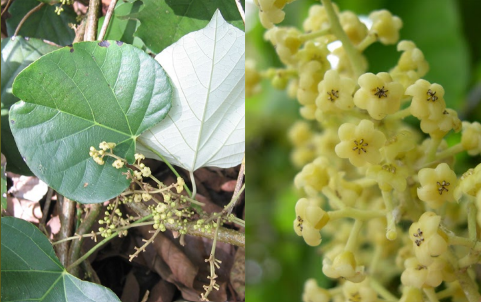
Menispermaceae
Tubocurarine alkaliod
Posions
Chondrodendron tomentosum
Papaveraceae
The poppy family
Key traits of Papaveraceae
Perianth dichlamydeous, triseriate, corolla buseriate
stamens: numerous
Placentation: paritetal
fruit: loculicidal or poricidal capsule
Papaveraceae floral formula
K 2[3] OR (2[3]) C 2+2 OR 3+3 A many G (2), superior
Papaveraceae- Ehrendorferia
E. chrysantha
E. ochroleuca
Ehrendorferia chrysantha
Petals golden yellow, 12-16 (22) mm, outer recurved

Ehrendorferia ochroleuca
yellow-white the color of the corolla

Papaveraceae- Fumaria
F. capreolata
F. officinalis
F. parviflora
Fumaria officinalis
sold as an herb, used medicinally
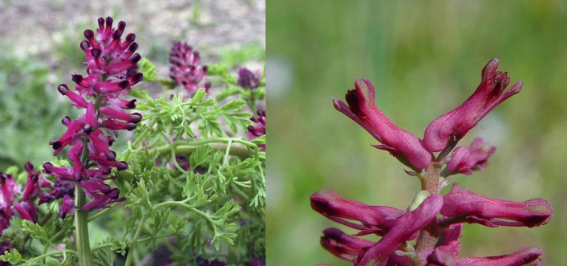
Fumaria parviflora
small-flowers, white to pink, inner purple-tipped

Papaveraceae- Dendromecon
D. harfrodii
D. rigida
Dendromecon harfordii
leaf 1.5 - 3 X, entire, tip generally ± rounded-mucronate
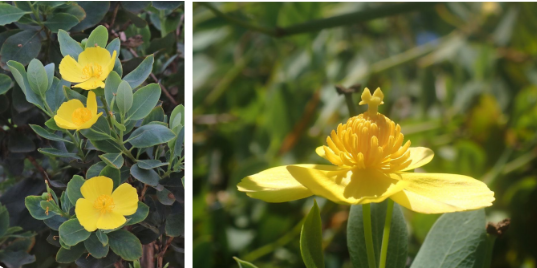
Dendromecon rigida
Leaf 3-8 X, minutely toothed, tip acute-mucronate
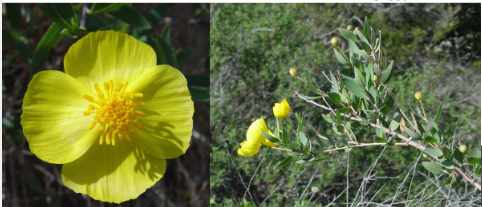
Papaveraceae- Romneya
R. coulteri
R. trichocalyx
Romneya coulteri
Sepals glabrous; peduncle glabrous; petals 60-100 mm; leaf 5-20 cm

Romneya trichocalyx
sepals appressed-hairy; peduncle ± bristly at top; petals 40-80 mm; leaf 3-10cm
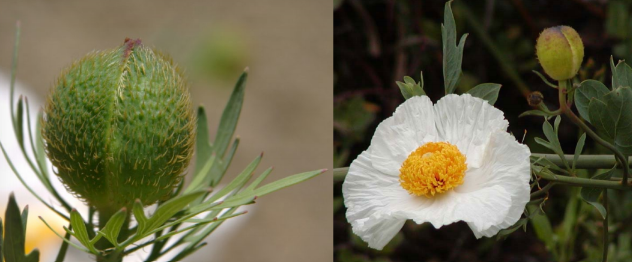
Papaveraceae- Meconella
M. denticulata
M. californica
M. oregana
Meconella denticulata
Receptacle without expanded ring beneath speals; stamens 6

Meconella californica
Receptacle with expanded ring beneth sepals; stamens gen. 12

Papaveraceae- Platystemon
P. californicus
Platystemon californicus
plants long-hairy, stamens less than 12

Papaveraceae- Argemone
A. munita
Argemone munita
plants prickly, armed and fortified
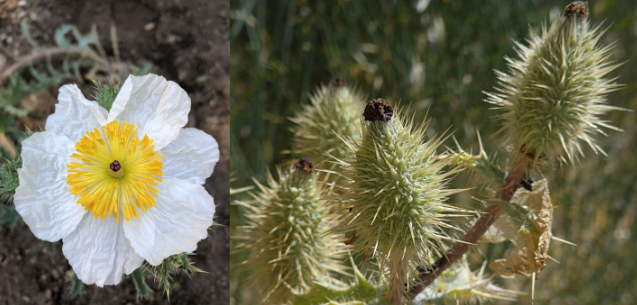
Papaveraceae- Papaver
P. heterophyllum
P. californicum
P. rhoeas
Papaver heterophyllum
style present; stigma head-like, lobes 4-11
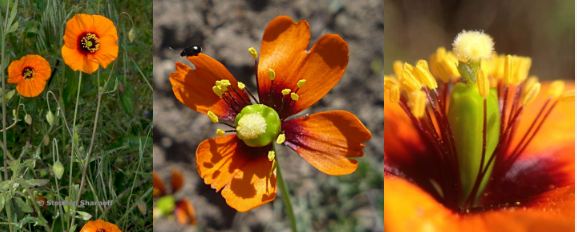
Papaver californicum
Petals 10-20 mm; peduncle glabrous or soft-hairy; after fire or disturbance
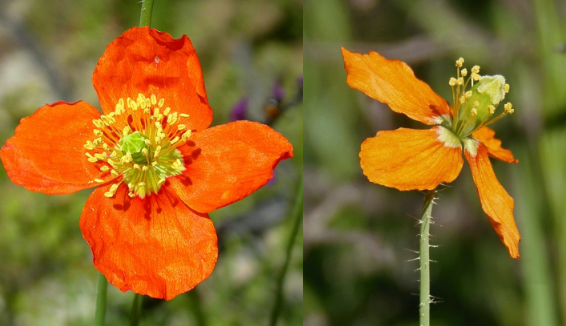
Papaver rhoeas
Petals 20-40 mm, alien form

Papaveraceae- Eschscholzia
E. californica
E. caespitosa
Eschscholzia california
Outer receptacle rim 0.5-5 mm
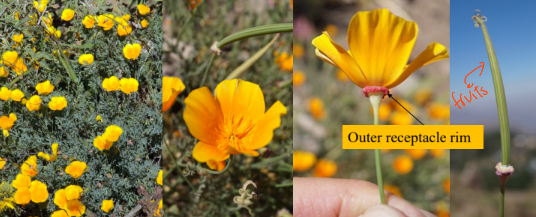
Eschacholzia caespitosa
Flower bud long-pointed, tip generally less than ¼ bud; mainland

Ranunculaceae traits
carples, which produce ovules containing female gametophytes
Proteales families
Nelumbonaceae
Plantanaceae
Proteaceae
Nelumbonaceae traits
Aquatic herbs
leaves emergent concave-peltate
gynoecium apocarpous
fruit: aggregate of nuts within an accrescent receptacle
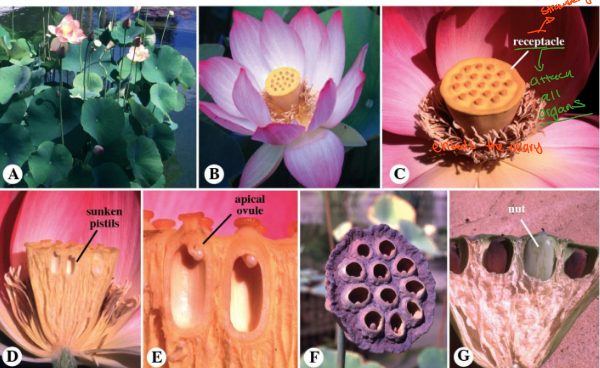
Platanaceae traits
monoecious trees
stipules encircling stiples
leaves: palmately lobed and vein
fruit: multiple of bristly achenes
Inflorescene a pendant spike of heads
Flowers: unisexual
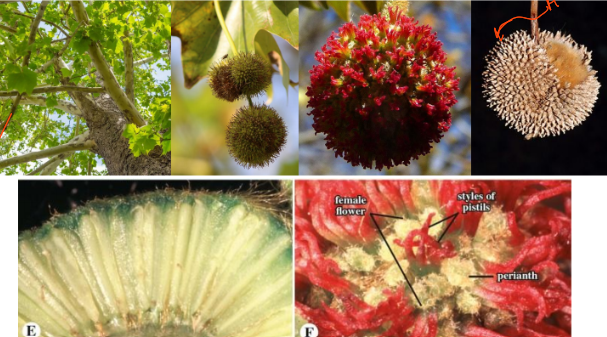
Proteaceae traits
perianth uniseriate
sepals 4
stamens 4
ovary superior
unicarpellous
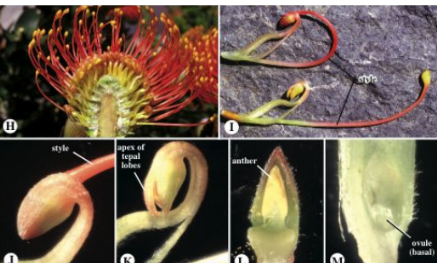
Saxifragales- Family
Crassulzaceae
Crassulaceae traits
leaf: succulent
CAM photosynthesis
Inflorescence: cymose
gynoecium: apocarpous
fruit: follicetum
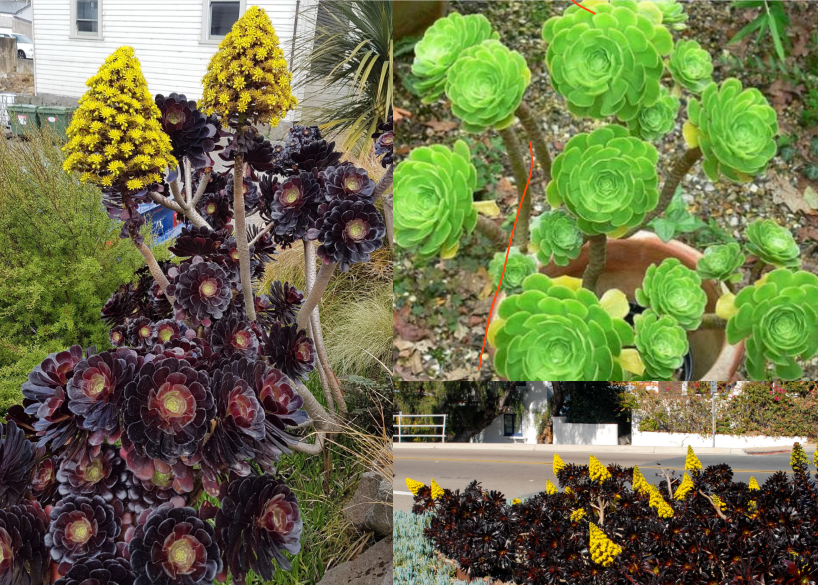
CAM photosynthesis
fixes CO2 at night as malic acid releases it during the day
prevents water loss by closing stomates at day and opening at night
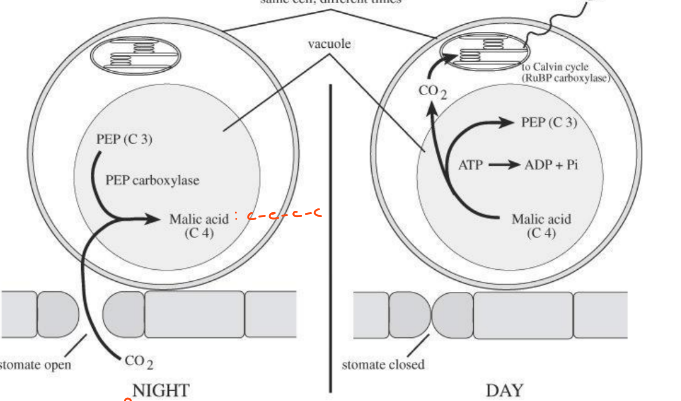
Crassulaceae- Crassula connata
Pgymy weed
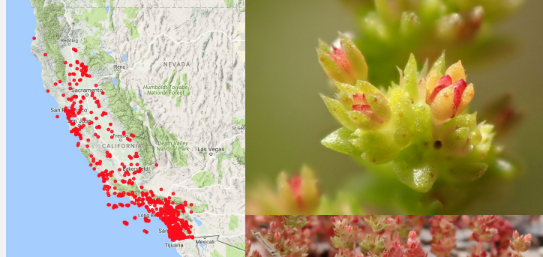
Crassulaceae- Crassula aquatica
water pygmy weed
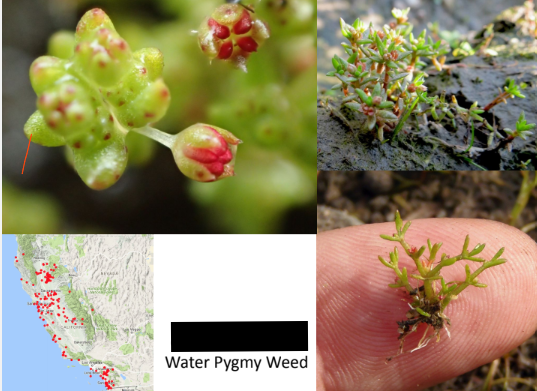
Rosids orders
Fabids
Malvids
Fabids suborders
Malpighiales
Oxalidales
Fabales
Malpighiales families
Euphorbiaceae
Hypericaceae
Malpighiaceae
Passifloraceae
Salicaceae
Euphorbiaceae traits
flower: unisexual
Ovary: superior, usually 3-carpellate
Placentation: apical-axile
Latex: red, yellow, usually white
Infloresence: cyathium
Euphorbiaceae subfamilies
Acalyphoideae
Crotonoideae
Euphorbioideae
Cyathium define
An inflorescence bearing small, unisexual flowers and subtended by an involucre (frequently with petaloid glands), the entire inflorescence resembling a single flower
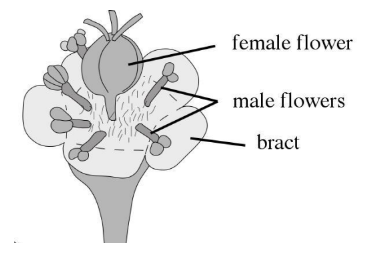
Laticifer’s defense
play a crucial role in plant defense against both herbivores and pathogens
forund in euphorbia
Salicaeae
dioecious to hermaphroditic trees or shrubs
Leaves: simple, usually spiral, stipulate
flowers: often small
placentation: parietal to basal
Fruit: capsule, berry, drupe
Populus fremontii
western cottonwood
leaf blade widely ovate-deltate
base truncate
margin coarsely crenate
spikelets pendant
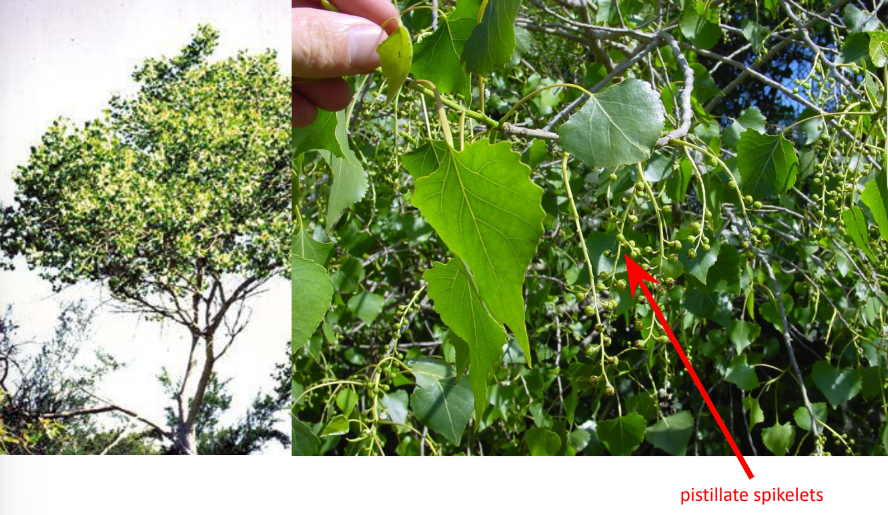
Salix lasiolepis
Arroyo willow
trees
leaves simple
narrowly elliptic to lanceolate
inflorescence: catkin
Oxalidales
family
Oxalidaceae
Oxalidales traits
leaves: pinnate or palmate
flowers: bisexual
outer basal nectaries
fruit: loculicidal capsule or berry
Tristyly
three distinct morphological forms with different style and stamen lengths. These forms are:
Long-styled (Pin) – Style long, stamens medium and short.
Mid-styled (Thrum) – Style medium, stamens long and short.
Short-styled (Thrum) – Style short, stamens long and medium
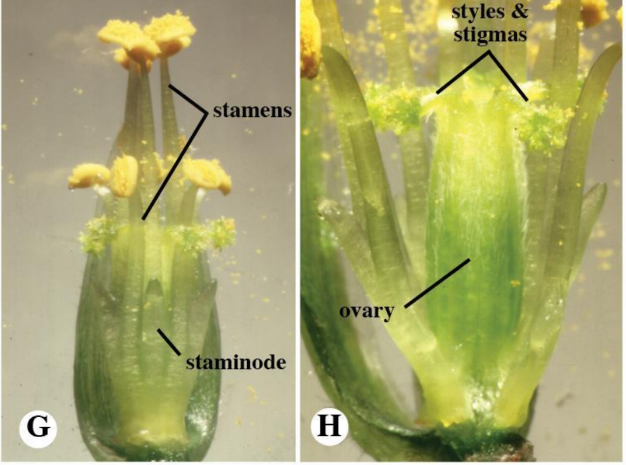
Oxalidaceae: native species
Oxalis californica
Oxalis pilosa
Oxalidaceae: non-native
Oxalis corniculata
Oxalis micrantha
Oxalis pes-carprae
Oxalis purpurea
Fabales
Fabaceae
Polygalaceae
Fabales traits
Leaves: stipulate often compound
flower: pentamerous, single unicarpellous pistil
Placentation marginal
fruit: legume
Fabaceae ecological importance
Archis hypogaea: peanuts
Glycine max: soy beans
Lens culinaris: lentil
Phaseolus spp., beans
Pisum sativum: peas
Fabaceae
subfamily
Cercidioideae
Caesalpinioideae (non-Mimosoids)
Caesalpinioideae Mimosoid clade
Faboideae
Cercidioideae
Flower: zygomorphic
Stamens: distinct
Seeds with apical cresecent-shaped hilum
Posterior petal inner to lateral
Cercidioideae in San Diego
Cercis occidentalis

Caesalpiniodeae
Flowers zygomorphic
Petals distinct
Posterior petal inner to laterals
Stamens distinct
Caesalpinioideae in San Diego
Amorpha fruticosa
Senna armata
Mimosoids
Flowers: actinomorphic, often densely aggregated
Petals distinct or connate
Hypanthium sometimes
Mimosoideae in San Diego
Prosopis glandulosa
Senegalia greggii
Faboideae
Flower zygomorphic
Perianth papilionaceous
Posterior petal
Banner or standard
Lateral petals
Wings
Anterior petals
Keel petals
basally distinct
distally connate
collectively called the keel
Posterior petal
outer to laterals
Stamens connate
monadelphous or diadelphous
Faboideae in San Diego
Astragalus trichopodus
Lathyrus vestitus
Acmispon micranthus
Acmispon galber
Dalea mollissima
Hosackia crassifolia
Lupinus bicolor
Medicago polymorpha
Psorothamnus emoryi
Psorothamnus schottii
Psorothamnus spinosus
Rosaceae
Leaves: stiplate
actinomorphic
Flowers: pentamerous, hypathium present
Rosaceae subfamily
Rosoideae
Dryadoideae
Spiraedoideae
Rosoideae
Gynoecium: apocarpous or unicarpellous
Fruit: achene, achenecetum or drupecetum
Dryadoideae
Fruit: Drupecetum or achene
symbiotic relationship with nitrogen fixing actinomycete
Spiraedoideae
Gynoecium: apocrpous
Fruit: drupe
Ovary: inferior - pome
Hypogynous flower
Superior ovary. Stamens and perianth hypogynous

Perigynous Flower
Superior ovary. Stamens and perianth are united into a hypanthium, which holds them level with ovary
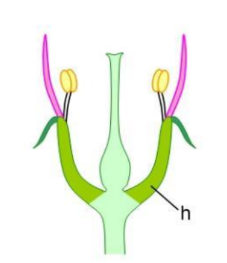
Epigynous flower
Inferior ovary. Stamens and perianth positioned above the ovary on a hypanthium
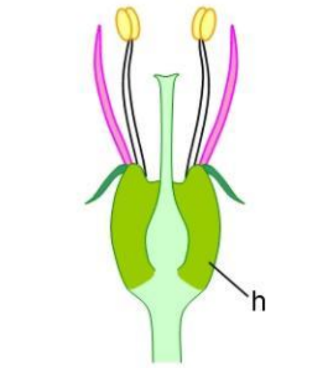
Rosaceae in San Diego
Adenostoma fasciulatum
Cercocarpus betuloides
Cercocarpus minutiflorus
Fragaria vesca
Heteromeles arbutifolia
Rosa californica
Prunus fremontii
Prunus ilicifolia
Prunus virginiana
Rhamnaceae traits
Leaves: simple, spiral or opposite
Flowers: perigynous to epiperigynous
Fruit: drupe, circumscissile capsule, or schizocarp
Stamens:alternispalous/ antipetalous
Ziziphus jujuba
first domesticated S. Asia many verieties, fruit (drupe) consumed as a snack, may be candid also used medicinally
Rhamnaceae of San Diego
Ceanothus: California- Lilac
Ceanothus sub genera
Ceanothus
Cerastes
Ceanothus traits
Stipules scale-like, thin, deciduous, leaves alternate
Infloresecence generally raceme -to panicle -occasionally ± umbel-like
Ceanothus leucodermis
Chaparrel white thorn
Shrubs; stems whitish, lateral branches sometimes, thorny; leaves simple alternate, membranous ternate-netted
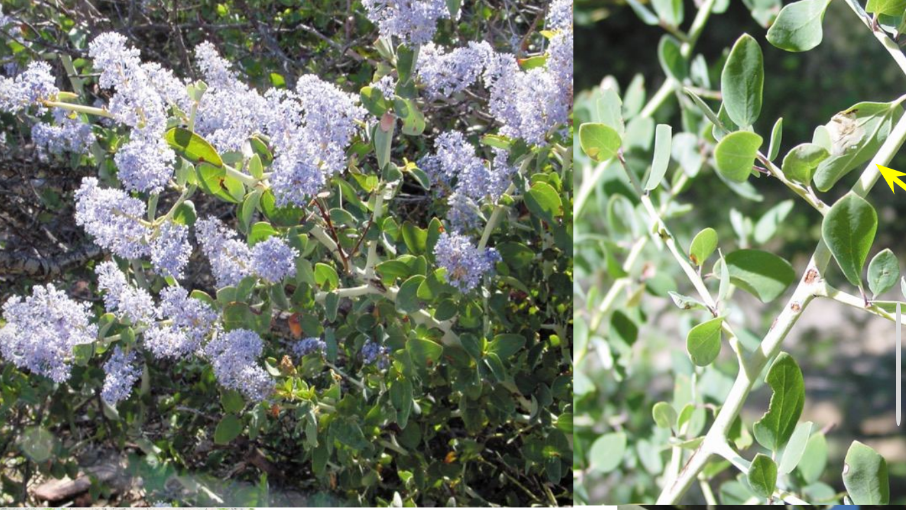
Ceanothus palmeri
Palmer’s-Lilac
Understory shrub; leaves simple, alternate, with one main vein from base; flowers white, in dense, erect cylindrical thyres

Native Ceanothus
Ceanothus lecucodermis
Ceanothus palmeri
Ceanothus pumilus
Ceanothus thyrsiflorus
Ceanothus tomentosus
Ceanothus velutinus
Cerastes traits
Stipules kob/ wart-like, croky, thick, bases persistent; Leaves generally opposite, clustered or not; inflorescene generally umbel-like
Ceraste native
Ceanothus Crassifolius
Ceanothus cuneatus
Ceanothus otayensis
Ceanothus perplexans
Ceanothus verrucous
Frangula califonica
Frangula purshiana
Rhamnus crocea
Rhamnus ilicifolia
Rhamnus pilosa
Ziziphus obtusifolius
Zizphus parryi
Cucurbitales
Cucurbitaceae
Begoniaceae
Cucurbitaceae
Mostly monoecious or dioecious vines
leaves simple, palmately veined or lobed
tendrils usually present
female flowers epiperigynous, with usually parietal placentation and three carpels
fruit: berry pepo, capsule, or samara
hypanthium present
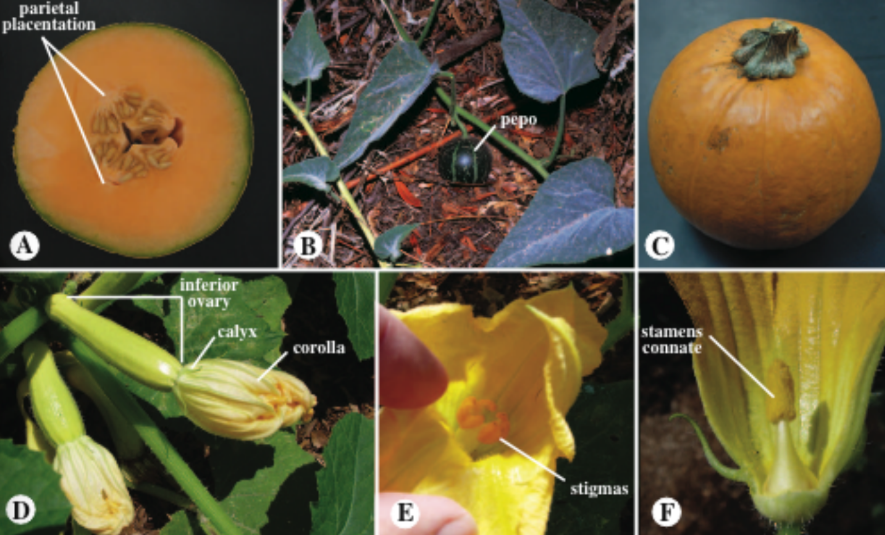
Cucurbitaceae native
Cucurbita foetidissima
March macrocarpa
Brassicales important trait
Glucosinolates: major plant secondary products in the Brassicaseae and close relatives
Deter herbivory and parasitism
Flavoring agents in the commercially important members
Brassicaceae traits
glucosinolates (mustard oil glucosides)
perianth cruciate (petals usually clawed)
2+4 tetradynamous stamens
Gynoecium: superior, 2-carpellate/ loculate ovary
Placentation: axile-parietal
Fruit: dehiscent with replum
ecological important Brassicaceae
Armoracia rusticana - horseradish
Brassica campestris - turnip
Brassica napus - Rutabaga
Brassoca oleracea - cultivates by Greeks by 650BC. main things we eat
Raphanus sativus - Radish
Cleomaceae
Stamens exserted, not tetradynamous
locule 1, placentation parietal
K 4 C4 A6 G (2)